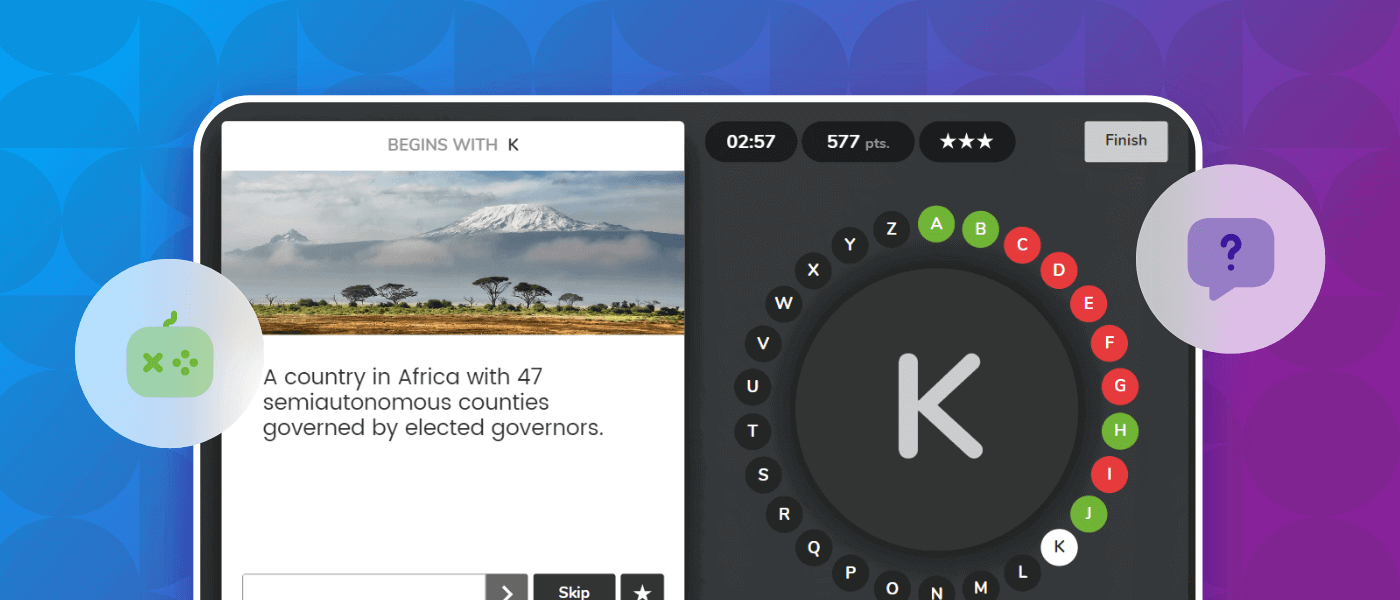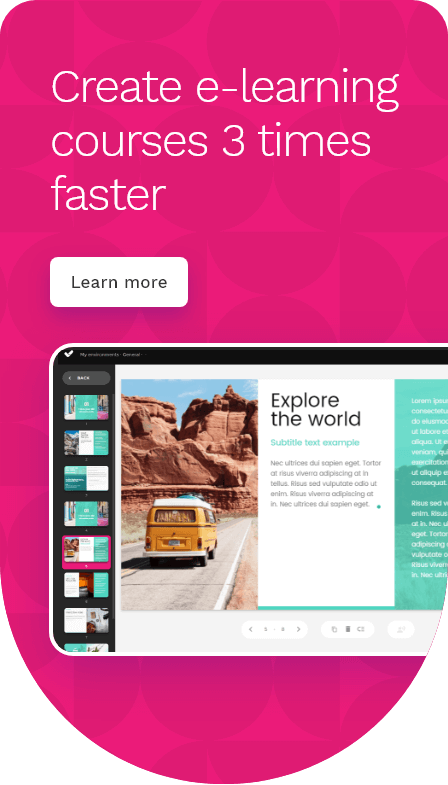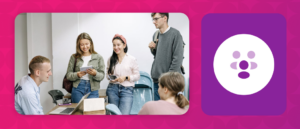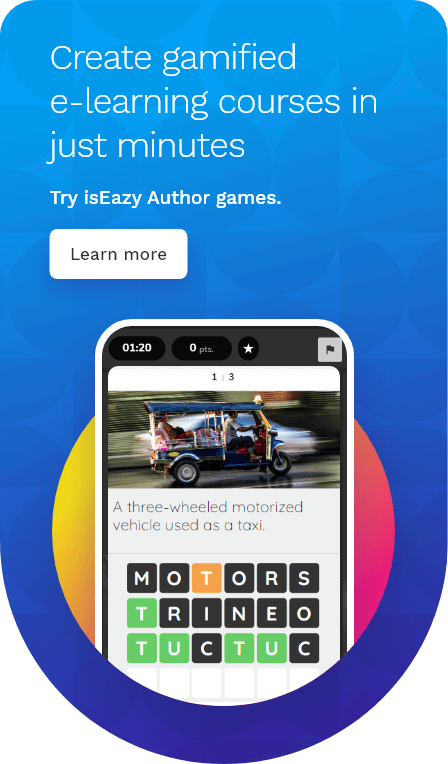Table of contents
ToggleAttention and motivation are the most valuable assets to ensure quality learning. As human beings, we have limited attention spans when performing certain activities. For some, the limit is 2 hours; for others, it’s 45 minutes. To engage students, we must understand motivation as the road to attention.
A significant relationship exists between how we acquire concepts or skills and how much information we retain. When we learn through participatory activities such as games, knowledge retention increases by 50 to 70%. Therefore, creating innovative and motivating learning experiences is necessary to help the knowledge acquisition process.
Currently, industries are betting on methodologies such as game-based learning. The reason is simple: organizations must motivate professionals, help them pay attention to the content, and ensure the retention of what they have learned to apply it in their functions. Game-based learning improves engagement, increases team collaboration, and encourages critical thinking. This article tells you everything you need to know about this incredible methodology.
What is game-based learning?
Game-based learning, or GBL, is a methodology that uses games specifically designed to promote knowledge acquisition. It can also be defined as games with specific learning outcomes. Generally, it’s a methodology designed to motivate, increase the ability to retain knowledge or skills, and apply them successfully in the real world.
Training through interactive resources such as games allows professionals to learn with greater autonomy and at their own pace. It’s a strategy highly valued by companies because it’s ideal for acquiring specific skills in a safe environment where professionals can make mistakes and learn without risk. This training method provides workers with a goal and allows them to perform actions and experience consequences. In the process, it shares some of the best attributes of experiential learning or learning by doing.
Data demonstrates the success of game-based learning, which surpassed $15 billion in 2021 and expects to expand by another 15% by 2028. But this is not surprising, as this methodology puts into practice essential elements such as challenge, concentration, and engagement, which are crucial in getting learners’ attention and helping them acquire knowledge.
Difference between gamification and game-based learning
One of the biggest confusions to this methodology lies in its similarities with gamification. However, as well as similarities, such as the ability to turn routine tasks into actual learning experiences, these two methodologies also have differences.
Gamification uses game elements, such as rankings, badges, or points, in a priori non-game-like environments to increase motivation and enhance learning. Game-based learning, on the other hand, uses existing or created games to reinforce knowledge.
Gamification elements are usually present in game-based learning activities, but not the other way around. Game-based learning is the stage above gamification. In GBL, learning is the result of playing a game, while in gamification, some game elements are inserted into traditional learning activities as reinforcement.
Benefits of game-based learning
New technologies have unveiled the path to modern learning methods that are increasingly effective and attractive to professionals. One of these is game-based learning, which can turn any learning session into a unique experience. Some of the benefits of GBL are:
Improves engagement and motivation
When correctly developed and designed to adapt to mobile devices, this learning methodology keeps professionals engaged with the training. It cleverly uses everyday digital actions such as swiping, selecting, or matching to keep users hooked on fun, flexible, and practical training.
Games increase employee engagement with the training program without making the task a significant effort. In addition, they often include friendly competition, which can be a great motivator for achieving training goals. Learners can see the progress of their peers and work to outperform them.
Increases retention
Learning methods that include visual elements such as images or videos improve retention. But if we add practice or experience, retention will increase even more. According to the learning pyramid, GBL allows professionals to “practice by doing,” which increases retention by up to 70%.
Provides instant feedback
A typical gaming feature is an instant feedback, which makes training processes even more efficient. When passing a level, the employee can receive immediate feedback on their performance, which will guide further training.
Promotes critical thinking
Games naturally encourage decision-making and critical thinking: they force users to analyze or use logic before making their next move, which makes them think about the effects their decisions will have.
Training based on decision-making is an invaluable advantage: every professional will have to make several choices throughout their career. Facing these situations, having developed critical thinking skills in safe environments such as games will help them become more confident and make better decisions.
Sets formative goals
One of the most important benefits of this methodology is that it sets clear and specific formative goals, which help learners understand what is expected from them and focus their efforts on achieving those goals.
Games designed with clear and specific learning objectives make professionals precisely identify what is expected of them, allowing them to focus on the skills and knowledge they need to develop to succeed in the game and, therefore, in their professional lives.
Customizes training
Games can be designed to suit the individual needs of the professionals or the organization. Companies must adjust training goals for each person based on their skills and prior knowledge, making the learning process more effective and meaningful.
Helps evaluate staff
Game-based learning provides constant feedback not only to professionals but also to organizations, being an advantage when it comes to knowing the individual or general progress of the staff and whether the training objectives are being achieved. Evaluation of game results allows organizations to adjust their learning approach and strategies.
#3 Examples of game-based learning that you can use in your training
Words
Words, our educational version of Wordle! This game allows professionals to learn new concepts and refresh those discovered in other modules or courses. It’s perfect for soft skills development or concept learning. It can be used in almost any type of training, as the objectives depend on its configuration and design.
The dynamic is simple: finding a hidden word, for which the learners will have 6 attempts. They can visualize an image accompanied by a text with clues, which will help them discover a concept learned during the training.
Each time the student tries to guess the word, the box for each letter will change color to provide clues. For example, yellow indicates that the letter is in the word but not in that box; green indicates that the letter is in the word and the chosen box; and gray indicates that the term doesn’t have that letter.
As the professionals match a word, an explanatory text reinforces the knowledge. The more words they get right, the more concepts they reinforce and the more points they earn, allowing them to continue playing.
Alphabet or Rosco
Alphabet is the perfect game to refresh concepts, but with all the fun! At the beginning of the game, each student must answer questions related to the training. A question for each alphabet letter: the student must respond to discover words linked to the training objectives.
When the game starts, the letters will form a circle, and the learners will answer questions when the time begins to run. The idea is to get as many words as possible in the shortest time to complete the circle, in which each letter is part of the answer.
Our version of the alphabet game includes pictures that act as clues for students to answer the questions. As the students get the answers right, they will accumulate points, and when the time is up, the game will end, and each player will be able to see their score.
Memory
Strengthen your professionals attention, concentration, and memory through this educational game. Memory is a game that consists of matching cards related to each other to get as many points as possible. It’s the online version of the traditional memory game with which students can practice visual memory and processing agility.
The game cards can show texts and images. The important thing is that they are related so that professionals can establish a connection and identify them. For example, to reinforce customer service protocols, professionals can match daily situations with the correct way to solve them.
At isEazy, we are e-learning experts and love designing modern, interactive, and practical learning solutions. Multiply the results of your training with isEazy Author, the best authoring tool on the market, with which you can include multiple educational games for your students to enjoy while they learn your training content. What are you waiting for to try isEazy Author free?













